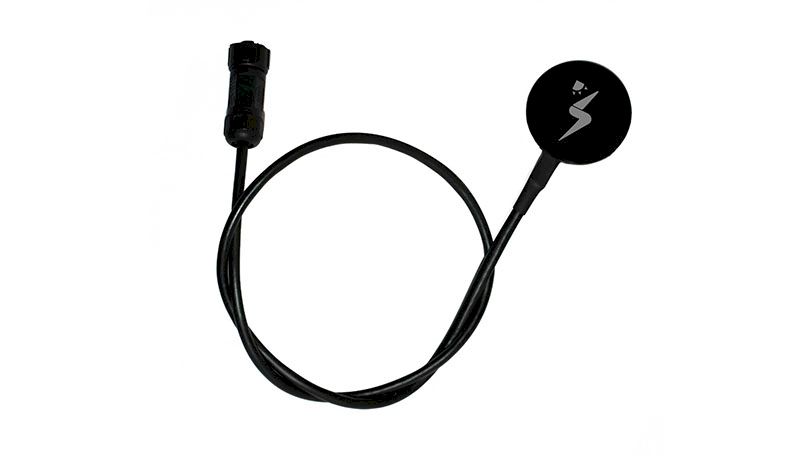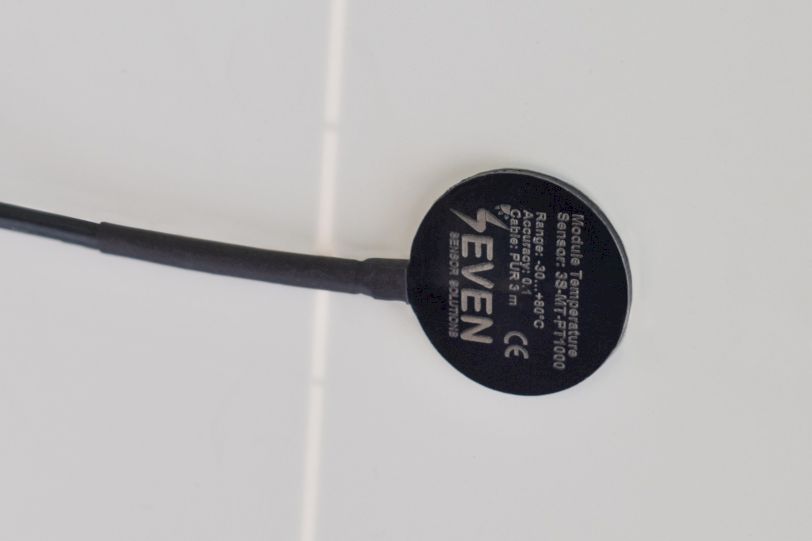Your cart is currently empty!
Optimal Placement of PV Module Temperature Sensors

Positioning According to IEC Guidelines
To ensure accurate temperature measurements, the International Electrotechnical Commission (IEC) recommends specific guidelines for sensor location. Sensors should be strategically positioned on solar panels, taking into account factors such as tilt angle, shading effects and distance from the edge. Compliance with these guidelines is essential for reliable, standardized data collection.
In the 2021 update, Section 9.1 of the IEC 61724-1 discusses the temperature of PV modules, stating that: For bifacial modules, rear-side temperature sensors and wiring shall obscure < 10 % of the area of any cell, and wiring should be routed in between cells when possible. Temperature sensors shall have a measurement resolution ≤ 0,1 °C and uncertainty ± 1 °C or better. This requirement aligns with the SEVEN Module temperature sensor, utilizing a PT1000 probe laminated between EVA film and two Tedlar Backsheets. The 3S-MT module temperature sensor has the same construction of PV modules, sharing the same heat transfer characteristics at the back of module, and features a resolution ≤ 0.1 °C and uncertainty of ±1 °C.
Avoidance of Shading and Obstructions
Permanent positioning requires careful attention to potential shading and obstacles which can impact on the accuracy of temperature readings. Positioning sensors away from shading elements, including neighboring structures or mechanical ventilators, minimizes the risk of localized temperature variations.
Optimizing sensor elevation and tilt angle
Sensor orientation and tilt angle play a role in capturing representative temperature data. Aligning the sensors with the panel surface and optimizing the tilt angle according to sunlight angles ensures that the measurements accurately represent the operating conditions of the solar panels.
Protection against environmental factors
Long-term operation requires protection from environmental factors. Housing designed to protect sensors from direct sunlight, precipitation and dust contributes to long-lasting accuracy. Compliance with IEC 61724-2 guidelines relating to environmental considerations is essential to maintain the integrity of the sensors.
Permanent installation of temperature sensors on the panel
- Materials and housings for long-term durability:
Sensor construction materials and housings must be chosen to withstand prolonged exposure to environmental elements. Materials with a high resistance to UV rays, corrosion and temperature variations contribute to the longevity of the sensors.
- Safe mounting mechanisms:
Permanent installations require secure mounting mechanisms to withstand wind loads, vibration and other mechanical forces. Robust, industry standard mounting systems prevent the displacement of sensors and ensure continuous, stable operation.

- Cabling and connectivity
High quality cables with appropriate isolation and connectors designed for outdoor use contribute to reliable data transmission. Compliance with IEC standards for electrical connections are crucial to the safety and integrity of the system.
Ensuring accurate and reliable long-term temperature monitoring in solar energy systems requires careful attention to the permanent positioning of panel temperature sensors. This includes protection against environmental factors and compliance with IEC standards. By integrating robust materials and mounting mechanisms, the industry can lay the foundations for effective temperature monitoring in solar energy systems. This is how Seven sensor manufacture Module temperature sensors, check this link for more: https://www.sevensensor.com/products/module-temperature-sensor